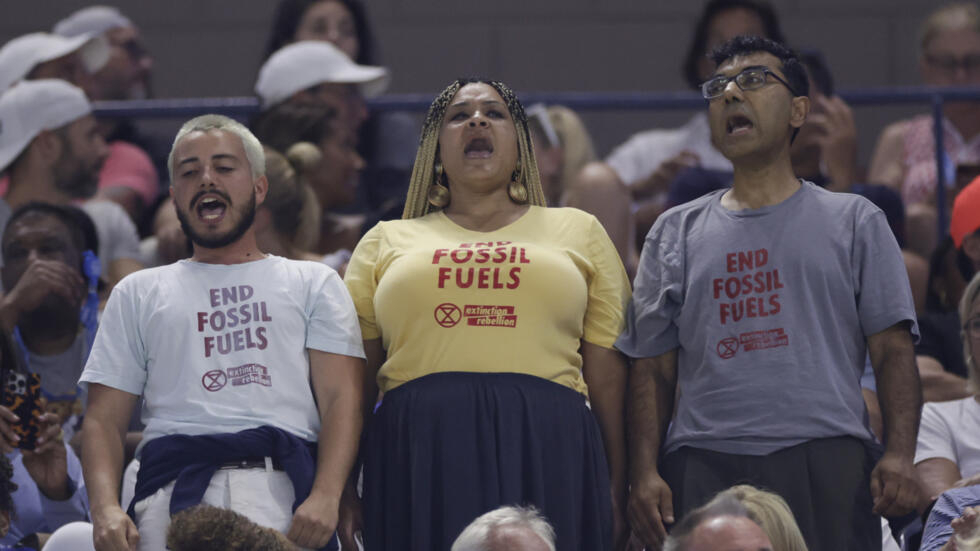
Last night, the US Open semifinal match between Coco Gauff and Karolina Muchova was disrupted for 49 minutes by climate protestors who stood wearing t-shirts saying “End Fossil Fuels” as they chanted and sang. One of them went so far as to glue his feet to the ground.
Immediately afterwards, all the governments of the world banned the sale and use of fossil fuels, thus solving global warming.
Oh, wait. Nothing happened except the annoyance of everyone at Arthur Ashe Stadium and those watching on TV.
Small acts like this are about ego, not results. The protestors got attention from the media, their names are probably in some news reports today, and whatever organization they’re aligned with considered the whole thing a success. But how do you define that?
If the goal was to convince politicians to change public policy, I’d like to know the flow chart of thinking involved. Could the foursome possibly believe their defiance would convince conservative climate change deniers in congress and state legislatures to stop taking the side of oil and coal companies?
Despite my wife being a huge tennis fan, we’ve never gone to the US Open is because it takes place at the hottest time of the year in New York. And it’s only gotten warmer, making it almost unbearable to sit in the stands, let alone play tennis at full strength for hours on end. This week, several players seemed to wilt as a result of the excessive heat and humidity. That’s clearly the impact of climate change, and we would all be better off if our use of fossil fuels was reduced considerably.
But the actions of last night’s quartet didn’t change a single mind. It’s important to have goals, but you have to be honest about whether you’ve fulfilled them.
I’m not saying all protests are useless. Last month marked the 50th anniversary of the March On Washington, where Dr. King gave his I Have A Dream speech. The crowd of onlookers numbered more than a quarter-million, and the coverage helped change public attitudes, which put pressure on politicians — just as King’s march from Selma to Montgomery had several years earlier.
The same was true of similar mass protests against the Vietnam War, two of which I attended as a kid with my parents in the late 1960s, traveling by bus more than five hours to join the sea of people that filled the National Mall. But you need that kind of scale to achieve change.
In various cities, I’ve come across solitary religious people standing their ground on the sidewalk and holding up hand-scrawled signs while urging passersby through a bullhorn to repent and follow the teachings of their imaginary deity. Not once have I seen anyone stop and pay attention to them, let alone repent right there and then.
Several times in the last decade, there have been groups of people who stretched themselves across interstate highways to promote their agenda. Right or wrong as they may have been, all they did was piss off drivers trying to get home after a hard day of work. Nothing else changed.
When you protest, you want to make people angry enough to agree with and perhaps join the cause you’re fighting for, but you don’t attain that by making them angry at you.
